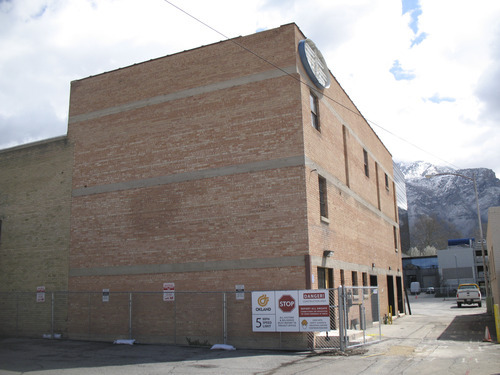This is an archived article that was published on sltrib.com in 2011, and information in the article may be outdated. It is provided only for personal research purposes and may not be reprinted.
Ken Merena read the news about Provo's efforts to make downtown attractive to college-age students with some amusement.
Merena had tried the same thing 17 years ago, he said, only to face city officials who saw his dance club, Club Omni, as a threat to the city's good morals. And, unless that puritanical attitude changes, Merena said, the recommendations of a Brigham Young University public relations student group will not go anywhere, either.
"Until there is some sort of rational connection between 'Do' and 'Say' in Provo, the city will never solve the problem of businesses prospering in downtown Provo," Merena said in a recent interview.
Mayor John R. Curtis sees the city as already welcoming college students to the downtown area.
"That was so many years ago," Curtis said of Merena's troubles. As proof, he cited the successful summer concert series on a downtown parking deck.
In April, Bradley Public Relations unveiled its proposals for bringing more college students into downtown. Its plan calls for using social media and websites to tell students what downtown Provo has to offer and suggested providing maps of parking and offering programs aimed at college-age crowds, such as concerts.
Merena had a similar idea when he opened Club Omni in a historic building on Center Street in 1994. At the time, he said, most of the Provo-area college students were traveling north to Salt Lake City's dance clubs.
Club Omni, originally called The Edge, offered an alcohol-free, smokeless dance venue that played edgy — but within BYU standards — music and had a dress code that banned gang attire. It proved popular with young people, especially Latinos. On weekends, the club could draw 1,700 people.
"I thought I was giving the city something wonderful, so in the middle of winter [young adults] didn't have to drive through the ice to Salt Lake City to go dancing," Merena said.
The city, at first, was supportive, Merena said, giving him the approvals he needed to turn the historic building into a club.
But after it opened for business, he said, city officials imposed regulations Merena believes were specifically aimed at his club.
The city required commercially operated dance halls to hire security guards and install airport-style metal detectors and surveillance cameras. At that time, Club Omni was the only commercial dance club in the city.
He said the city also limited his hours of operation, requiring him to close by 1 a.m., and prohibiting him from admitting anyone after midnight.
Merena said that hurt him with his best customers — Latinos, who were used to dance halls in their native countries staying open later.
Even though there was plenty of on-street parking and spaces in city-owned lots in the area, Merena said, the city required him to lease 576 parking spaces.
And when Merena attempted to address the issue of youths staging "fight club" events in the canyons by offering supervised and regulated boxing matches at the club, the Municipal Council quickly enacted an ordinance banning organized fights and slapping an injunction on Merena to stop his first event.
It seemed to him, Merena said, that he could not do anything that would satisfy city officials, who appeared to take their cues from the movie "Footloose," about teens straining against the restrictive social mores of a conservative town.
"If we would have read scriptures before every dance, we still wouldn't have been righteous enough for them," Merena said.
The club was the scene of the city's first gang-related killing, when a gang member shot a rival inside the club in 1998. Merena said someone smuggled the gun into the club despite his and his staff's best efforts at security.
In 2004, Merena sold the club and left Provo, ending what he said was a decade-long nightmare. A plasma center moved into the building and today it's slated to be razed to make way for Nu Skin Enterprises' new addition.
Curtis, who came to the city in 1998, said downtown's current issues are more complex than Merena describes.
"It has a lot more to do with market forces and what the market wants to see than what any one of us wants to see," Curtis said. "People are frustrated because the downtown is not what they want it to be, but the downtown is bigger than any one person or entity."
He said the Rooftop Concert Series at Provo Towne Square drew about 1,500 people downtown for concerts on the first Friday nights of the summer months. He said the city does require the concert organizers to obtain a permit, abide by noise restrictions and provide restrooms.
Courtney Kendrick, a concert series organizer, said the culture is definitely starting to shift in favor of youth. She said the concert series has been "wildly successful" and has support from some area business owners.
"I do think Provo is ready for it," Kendrick said of having a more youth-oriented downtown.
But, she said, there is still some resistance. She said at least one business owner has complained the concert series runs too late at night, ending at 10:30 p.m. In contrast, she said, concerts go on past that time in downtown Salt Lake City with no complaints.
"It's sad that we're getting complaints about noise in downtown [Provo] after 10:30, where there should be noise," Kendrick said.
Twitter: @donaldwmeyers
facebook.com/donaldwmeyers



